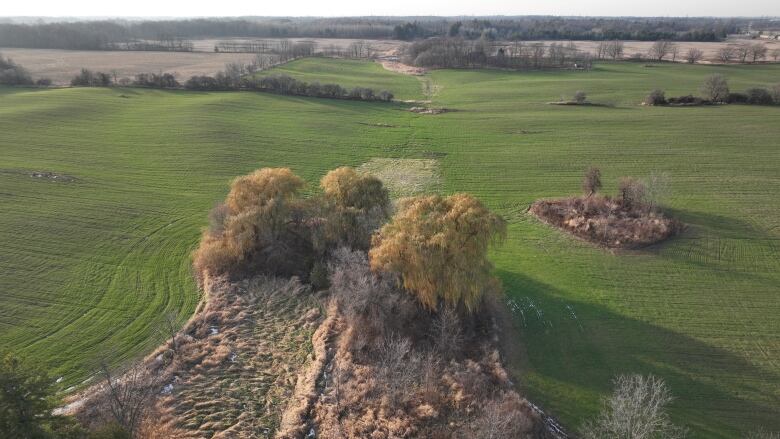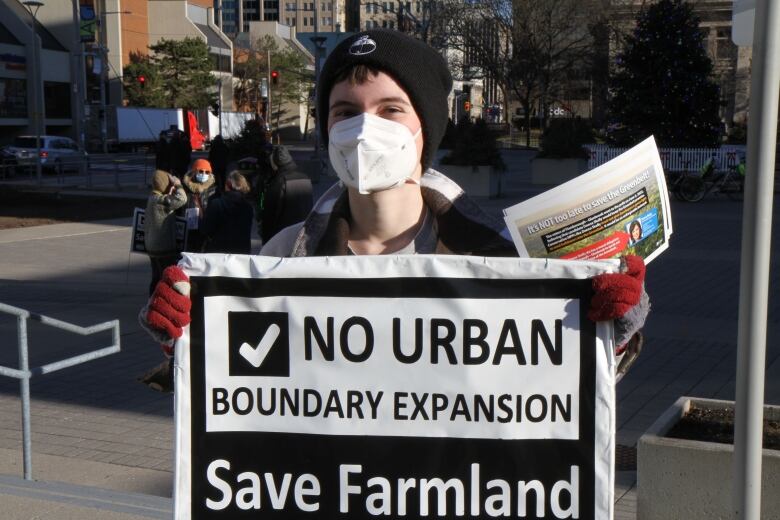Hamilton can meet housing targets without opening greenbelt lands, urban boundary: report
The province rejects the report calling it 'anti-housing' and 'anti-growth'

Hamilton already has enough space to build 87,600 homes within its urban boundary close to double its provincial target without needing to open up the Greenbelt or expand into prime farmland, according to a new report.
The report released earlier this week is based on recent land assessments from Hamilton and 20 other municipalities in the Greater Golden Horseshoe area including Toronto,Brantford, and the Halton and Niagara regions.
Across the horseshoe, there's existing room to build over 2 million homes above Doug Ford government's "arbitrarily chosen" target of building 1.5 million homes province-wide, says the report by planner Kevin Eby.
Eby was one of seven members who resigned from Ontario's Greenbelt Council in 2020 over concerns about the province's environmental policies. He prepared the report for The Alliance for a Liveable Ontario, a coalition of advocacy groups opposed to the province's controversial housing Bill 23, including Environmental Defence.
In addition to thebill,now calledthe More Homes Built Faster Act,the province also proposed amendments to the Greenbelt Act andorderedHamilton to expand its urban boundary all in service of building homes.

Eby's findings back up what the alliance has been arguing opening more land up for development is "unnecessary" and "unhelpful" to meet Ontario's housing goals, said Phil Pothen, a program manager for Environmental Defence.
"There has always been a massive glut of existing designated greenfield land that was already set aside for development, sitting unused," Pothen said in an interview.
"And there has already been a recognition that there is vast capacity to add new homes to existing neighbourhoods."
Province says more land neededto meet housing needs
The province rejected the report's findings. Spokesperson Chris Poulos, speaking on behalf of Minister of Municipal Affairs and Housing Steve Clark, described it as based on "anti-housing and anti-growth ideology, rather than fact."
"The lands removed from the Greenbelt provide a unique opportunity for the government to ensure Ontario's housing needs are addressed," Poulos said in a statement.
He said the province expects all the developments to include active transportation, community centres, schools, hospitals and long-term care and at least 10 per cent of homes built be affordable. If these conditions are not met and progress isn't made by 2025, the government says it will return the lands to the Greenbelt.

Before the province ordered Hamiltonto expand, the cityhadalready considered and rejected a massive expansion of its urban boundary to make way for homes. In 2021, council voted against the staff proposal, instead choosing to build within its current boundary.
Coun. John Paul Danko was among those councillors.
"We heard from residents in Hamilton overwhelmingly saying to build up, not out," said Danko.
A key reason was to protect prime agricultural land and the local supply of food, he said.
Based on this approach, the city currently has plans to build up its urban area by adding 37,000 housing units by 2031, the vast majority of which have already been approved, said Danko.
"So even if you accept that at some point we may have to expand the urban boundary, it's certainly not now and it's not anytime in the near future," Danko said.












_(720p).jpg)


 OFFICIAL HD MUSIC VIDEO.jpg)
.jpg)



























































































